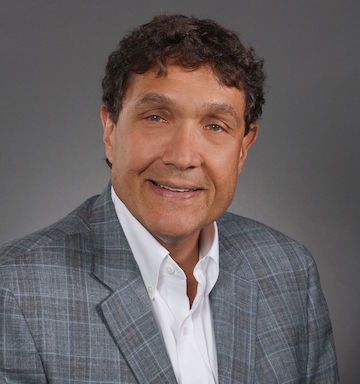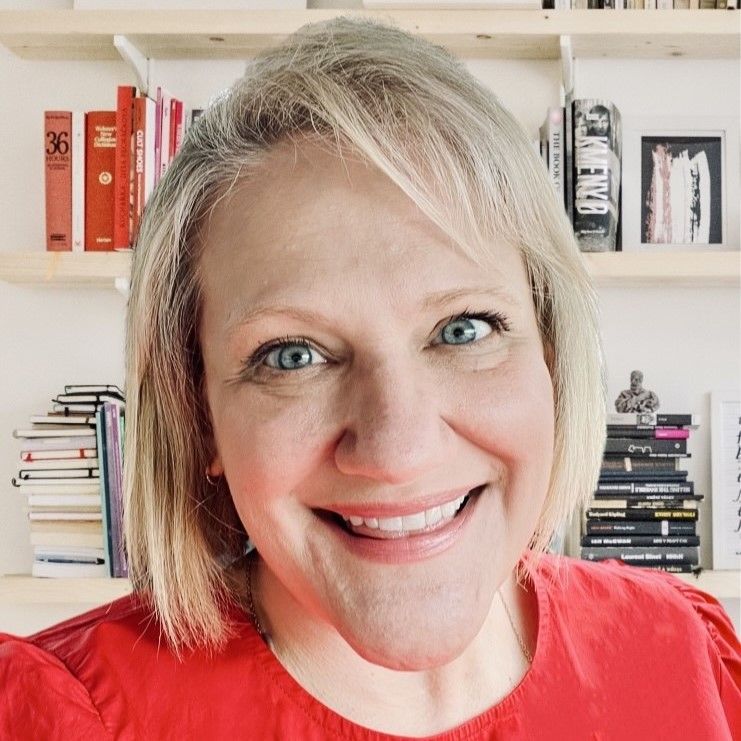Article
Dr Joshua Richter Explains Importance of Cytogenetics in Multiple Myeloma
Author(s):
Joshua Richter, MD, assistant professor of medicine in The Tisch Cancer Institute, Division of Hematology and Medical Oncology, explains how the concept of cancer stage does not mean the same thing in multiple myeloma as it does in other cancers, why cytogenetics matter, and new data from trials involving quadruplet therapy.
Joshua Richter, MD, is assistant professor of medicine in The Tisch Cancer Institute, Division of Hematology and Medical Oncology. He is the director of Multiple Myeloma at the Blavatnik Family-Chelsea Medical Center at Mount Sinai. His patients include those with multiple myeloma and related diseases, such as AL amyloidosis, plasma cell leukemia and Waldenstrom’s Macroglobulinemia. Richter conducts clinical trials that focus on novel therapies, including antibody therapy and immunotherapy.
AJMC®: What does it mean to have high risk cytogenetics in multiple myeloma?
Richter: Myeloma is very different than other cancers, because in most cancers, they're staged by the [American Joint Committee on Cancer] staging system: stages I, II, III, and IV, with the gradual increase in stage being a worse a prognosis; those with stage II do worse than [stage] I, stage IV will worse than III, and so on. With myeloma, stage is not the end all be all. And cytogenetic risk is probably one of the biggest—if not the biggest—prognostic indicator. When we look at the cytogenetics, we're really looking at the DNA inside the cancer cells. These aren't genetic abnormalities you get from parents or passed on to children—it’s just in the cancer cells. And there's a variety of abnormalities of deletions of parts of chromosomes or additions or translocations that we know mean someone has high risk or standard risk. And we say about two-thirds of myeloma patients are standard risk, and a third of them are high risk. Essentially, if you take the two groups standard and high [risk] patients, give them the identical therapy, they tend to respond about the same, but [those with] high-risk disease will relapse sooner.
AJMC®: How are people with high risk cytogenetics identified during their process of being screened? How are they being diagnosed and also being treated for multiple myeloma?
Richter: There are a number of ways to determine high risk. There are immunologic features of high risk. There's what we call functional high risk—which [occurs] when we give you a treatment [that] typically allows people to stay in remission for 5 years, and if you relapse within a year, that's functional high risk, even if we don't identify the reason why….
But cytogenetic high risk is determined on the bone marrow biopsy. And when we do a bone marrow, the first thing [examined] is how much myeloma—is there a little or a lot? But then we also send a variety of different types of genetic studies. The standard one is called a karyotype. We basically crack open 20 cells while dividing, spread them out on a piece of paper—or computer nowadays—and see if there's any abnormalities. The next level is called FISH, which stands for fluorescent in situ hybridization, where we pick about 6 or 7 different specific abnormalities that we literally go fishing for. We use probes to look at 200 to 400 cells to find out the cytogenetic abnormalities. Then, there's something called gene expression profiling, not just seeing what the chromosomes are doing, but also at the gene level, what genes are turned on or off. There are 2 main types. One is called the GEP70. The other is called SKY92. They look at either 70 or 92 genes specifically. And there's a host of companies that have what are called NGS panels, for next generation sequencing—Foundation Medicine, Semaphore, etc.—that use these huge panels to find these abnormalities. But these [tests] are all done on the bone marrow, because in myeloma the bad cells don't circulate in the blood all that much. They mostly live in the bone marrow itself.
AJMC®: I want to ask about a particular cytogenetic abnormality that occurs in multiple myeloma—specifically 1q21.1 (microdeletion)? Could you tell me what does it mean to have gain or amplification of 1q21.1?
Richter: Sure. On that arm of a first chromosome, we're supposed to have 2 copies. But what if you have 3 copies, 4 copies, 5 copies? And it turns out that the more copies, the worse it is. We separate out [that] 3 copies is bad but 4 or more copies is worse. And that's where we kind of get those terms gain and amplification being either 3 copies or 4 or more copies. And actually, it's one of the most common genetic abnormalities in myeloma, it's seen in about 30% to 40% of patients.
AJMC®: How does that prevalence compare to other chromosomal abnormalities in multiple myeloma?
Richter: The other chromosomal abnormalities are seen at varying prevalence. For example, t(11;14) which is the abnormality that predicts response to venetoclax, is seen in about 15% to 20% of patients; the t(4;14) is [seen in] about 10% to 15%. The others like t(14;16) t(14;20) are pretty rare, usually around 1% or fewer of patients. Those are the other main ones.
AJMC®: How does having gain or amplification of 1q21.1 impact a particular patient's disease? Does it impact progression? What are the outcomes like for a person who has this?
Richter: Again, having high risk disease means that you tend to relapse sooner. Anecdotally, 1q21.1 [patients] tend to have very aggressive courses, especially those who have 4 more copies. And really what this means in myeloma in 2022, is, if you have one of these abnormalities, like oh, 1q21.1 gain or amplification, we need to strategize how to offset that risk. And one of the ways that's looked at is, besides some drugs that are out there, new drugs on the horizon is, you know, in the maintenance phase, giving more than 1 drug as opposed to just [lenalidomide] Revlimid maintenance, considering things like Kyprolis (carfilzomib), and Revlimid or daratumumab (Darzalex) and Revlimid as a maintenance strategy.
AJMC®: What factors do you consider when you're selecting therapies for these patients who have 1q21.1? You mentioned some are in the maintenance phase. What [other therapies] would you be considering? And how do the anti-CD38 medications come into play here?
Richter: Although people with high risk lesions like [1q21.1], I lean more towards giving them a transplant that not—a lot of this from the FORTE data, which compared KRd [Kyprolis, Revlimid, daratumumab] and transplant versus KRd for 12 cycles or KCd [carfilzomib plus cyclophosphamide plus dexamethasone] and transplant. Although daratumumab is by far the most common anti-CD38 isatuximab is another anti-CD38. And there's some interesting data that was part of a project on that it looks like there may be some specific benefit of isatuximab. In patients with 1Q—the data is still kind of early, but it's interesting—we’re trying to follow this if this holds true, but in the GMMG HD7 trial, using isatuximab in a quadruplet in newly diagnosed patients, and we're paying particular attention to that subgroup, seems that isa may have some role specifically in these patients.
AJMC®: That’s a great segue. I’d love ask you about these 2 quadruplet studies that had updated data presented at [the American Society of Hematology] this past year, the GRIFFIN trial, of course, with daratumumab, and then the GMMG HD7, which like you mentioned with isatuximab. What were some of your key takeaways from each study? What are you using from these studies in practice now?
Richter: In the GRIFFIN study, with Dara-RVD, that regimen already has [National Comprehensive Cancer Network] guideline approval. We can already use that in clinic even though it's not FDA approved just yet, Isa-RVD is still not quite there. So, that's not approved. Both quadruplets have amazing response rates and can get more than half of the patients [minimal residual disease] negative, which is right now the deepest level that we can measure in terms of remission. And they're both very well tolerated and very efficacious. But the biggest difference between them is this component of post transplant consolidation. So, GRIFFIN gives the Dara-RVD transplant and then post-transplant consolidation before going on to the maintenance phase. Whereas the HD7 trials just gives Isa-RVD. transplant and right onto maintenance. And although we used our RVD more because it's approved by the NCCN, we don't use the GRIFFIN approach. In clinical practice, we use the HD7 approach because post- transplant consolidation is not used a whole lot in the United States. It's used in some places and particular situations; it's used a little more in Europe. And at least my thinking behind the role of post-transplant consolidation is I always think about 3 cells. The myeloma cells [that are] killed with a transplant, the ones you were never going to kill, and then a third group that you kind of stun with your transplant. And if you let them just go on the maintenance they'll recover. But if you hit them a little bit harder, that special time with the full bore, you'll kill more of more of them and get a deeper response. So, there are some patients who do that, for but post-transplant consolidation is just not something was commonly done in the United States.
AJMC®: Let’s discuss a recent phase 1 study that you were involved in with oral eltanexor in the relapsing/remitting multiple myeloma population. Can you tell us about this drug and how it works in multiple myeloma?
Richter: Eltanexor is a second-generation selective inhibitor of nuclear export. People may be more familiar with the first-generation selinexor. Selective inhibitors of nuclear export are a really fascinating group of drugs. Essentially, this is a mechanism [that] many cancers used to survive, because basically, when our body makes cancer cells, our body targeted them death—apoptosis—and when the cancer cell is targeted, a series of events happen within the nucleus. This cascade of events leads to the cells’ death. One of the ways that cancer cells survive is they kick part of that cascade out of the nucleus; like, there's steps 1 through 10. And it kicked step 4 out of the nucleus through these little holes called export ends, or XPO1….The cells target for destruction against steps 1, 2 and 3 and [then] there's no step for the cell doesn't go through the process of killing itself. So basically, what this drug does is it's a selective inhibitor of nuclear export—it stops the cancer cell from kicking that part of the equation out of the nucleus and forces the cell to die. It turns out that unlike anti-CD38, which is only expressed on certain cancer cells, or CD20 that is only expressed in certain cancer cells, this mechanism of cancer cell survival is fairly ubiquitous. And these classes of drugs have activity across almost every tumor, from liquid tumors [such as] leukemia, myeloma and lymphoma to solid tumors like sarcomas and glioblastoma multiforme. The biggest difference between selinexor and eltanexor is that selinexor crosses the blood brain barrier and eltanexor does not. And this is really important in terms of toxicity. You know, one of the toxicities that we saw with selinexor was nausea and [gastrointestinal] related things, and this comes from activation of the chemo trigger zone. That basically a primordial area in the brain that was really designed for when we ate berries that were poisonous, it would make you throw it up before the poison got to the brain. And that's why some of these drugs that penetrate the blood brain barrier make you nauseous or sleepy or things like that. Eltanexor does not, so it's a very well tolerated drug. It’s unclear what it’s future is going to be in myeloma, but I think it would be a great addition if we could have it.
AJMC®: What are the most promising developments that you see on the horizon? Whether it be for patients with 1q21.1 gain or amplification—or just in general for multiple myeloma?
Richter:For 1q21.1,I think specifically, there's some really interesting data looking at MCL-1 inhibitors, there's a couple assets in there. This comes from what lives at that locus on that chromosome and MCL-1 is there. There are a few drugs, including AMG 176….And there are drugs that are targeted for specific genomic abnormalities, like the SETD2 inhibitors looking to target t(4;14) myeloma. My biggest interest is in multispecific antibodies. So bispecific [antibodies] and trispecifics—they’re off the shelf right now, T-cell engagers that are looking to mimic what a CAR T-cell [therapy] does, but without the manufacturing process. Myeloma can change on a dime, and having the flexibility to give drugs at a moment's notice is advantageous. So, just in some of the bispecifics and trispecifics, and the next generation of these are going to ignore the T cell altogether. Because right now, they're all CD3-based bispecifics, meaning they target the cancer cell, and then they target T cells—that’s CD3—to activate our T cells to attack the cancer. One of the big downsides is cytokine release syndrome. But there's a new generation that's going to head into the clinic in the next 6 to 12 months, using CD47 as the target immune effector cell, and basically targeting the cancer cell, but now activating what's called the “don’t’ eat me” signal. And it's basically a macrophage activating signal. And the hope is that we could have myeloma cell kill with immune activation without cytokine release syndrome.
AJMC®: I'd like to provide you a chance for some closing thoughts, or to share anything we haven’t reviewed for our audience.
Richter: What I always like to say is when I started treating myeloma, I used to tell people flat out it was incurable. I think we're actually curing a few people today by accident….But I think we're on the precipice of starting to understand myeloma at a level where we'll be able to start curing more people intentionally and hopefully, eventually, everyone intentionally.


